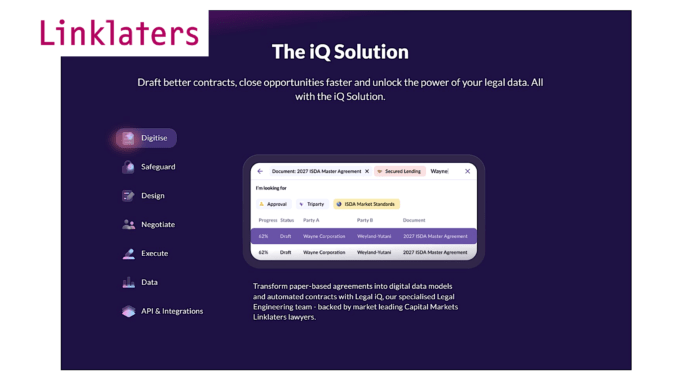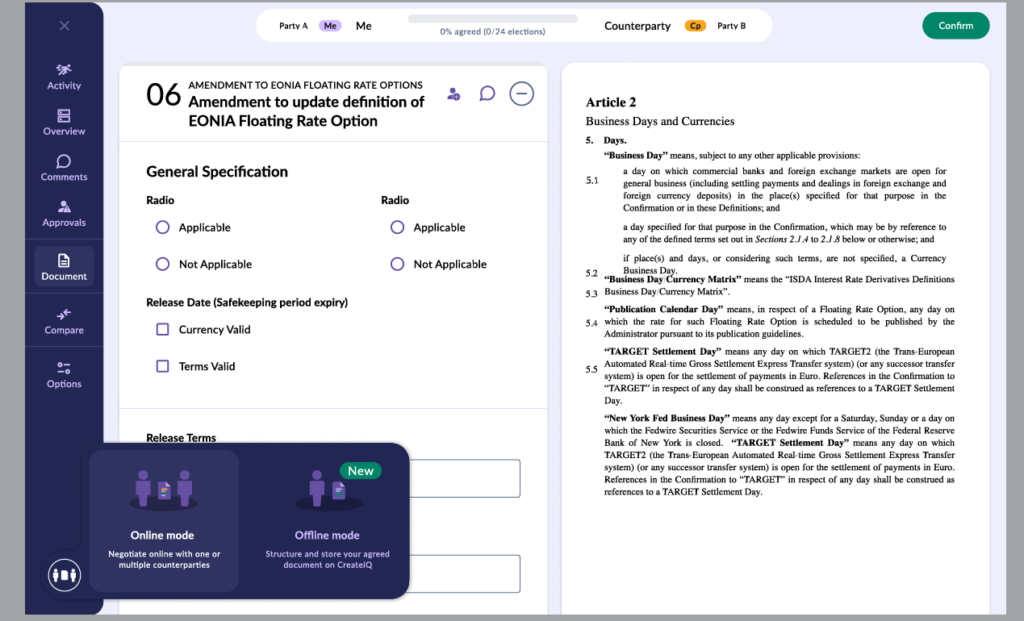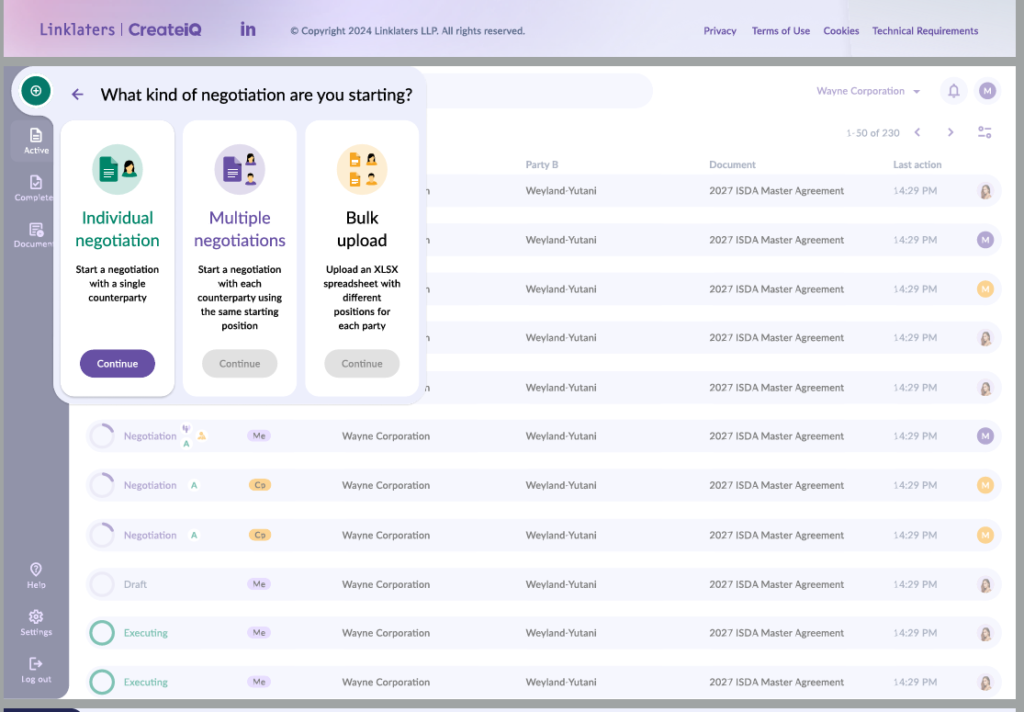
Global law firm Linklaters has today unveiled a new, more user-centric version of its CreateiQ contract lifecycle platform to provide an ‘intuitive user interface, geared to streamline multiple different workflows like never before’.
Shilpa Bhandarkar, Co-Head, Client Solutions & Innovation at Linklaters, told Artificial Lawyer some more about the changes (see below).
But first, what is CreateiQ? It’s part of the law firm, just as some other firms have their own client-facing software groups. As noted, it’s primarily a contract lifecycle platform, with many aspects to it, from drafting contracts, to negotiation and approval, to data leveraging, with a strong focus on the capital markets sector.
It is designed to allow clients to know ‘exactly what’s in your contracts in real-time’ and thereby allow you to ‘leverage your data, and understand your risks and opportunities in a matter of clicks’.
CreateiQ also allows you to ‘auto-renew contracts, identify new sales opportunities and get notified when contracts are due for renewal’. And fundamentally, the Linklaters tech group states it helps clients with their legal operations needs and can ‘reduce unnecessary legal spend’.
Over the years they’ve worked closely with a number of major clients, such as BNY Mellon, and financial industry groups, including ISDA. The firm’s website states they’ve worked with 300 organisations and six of the world’s largest banks. They’ve also run collaborations with standardisation pioneers such as OneNDA and Bonterms with regard to NDAs.
So, there you go and here’s a link to a previous interview about what it does. Now here’s Bhandarkar on the improvements.

What has changed and why did you do this?
‘Our lead product manager describes it best: to combine ‘technical excellence with joyful simplicity’.
We’ve always had technical excellence – we have an incredibly sophisticated product – and I don’t say that lightly. The sophistication is necessitated by a combination of factors:
- the number of category users we have,
- the fact that the documents being negotiated are sophisticated and complex
- and, with our focus on capital markets documentation, our users are regulated entities for whom contract data holds business value, but also is required to meet risk, audit and compliance obligations.
We wanted to add simplicity into the mix – to live the philosophy of user-centric design – so that our users enjoy being on the platform and find it easy and intuitive to use.
The ambition is for our users – all of them, regardless of category – to be able to use the platform with no training, in the way that you don’t need to be trained to use Spotify.
This is no easy task given how many category of users we have. Lawyers and document teams are primary users – they’re the ones who negotiate the contracts and benefit from the efficiencies generated. However, we have other users.
The main ones are:
- risk and compliance teams providing require approvals and tracking the digital audit trail
- ops teams interested in very specific clause data that they then pull into their other systems
- digital transformation and management teams tracking portfolio stats.
Our platform also accounts for advisors to help in-house teams with their negotiations – so we have workflows for both in-house teams as well as their law firm counterparts. And finally, because we are a negotiation – not just a document generation – platform, we also account for the experience of counterparties (the ones receiving documents generated on CreateiQ) and their advisors.
What is this new look and approach?
The ‘new’ approach surfaces only the functionality relevant to that category of user, depending on their workflow. For example, only our document creators need to decide whether they want to start individual or multiple negotiations, or whether to negotiate their documents online or offline (these options are not relevant to – for example, risk and compliance teams) – and so only they will see the screens below:


The new look – as you can see – is lighter and fresher.
In addition to the new design and various feature enhancements, we’re also introducing a range of new features focussed on search, collaboration and advisor management (we have a partnership programme and have several law firms using the platform, negotiating documents on behalf of their clients).’
—
So, what does this all mean? First, it shows that CreateiQ is providing Linklaters with some form of commercial benefit and that they are not only sticking with it, they are investing in improving it. And that’s a good signal to the rest of the legal market that building your own software tools for clients can pay dividends. Second, it shows a maturity of product development. It’s fair to say that some ‘DIY’ tools back in the day were a little bit basic – in this case, it’s hard to put any distance between this and anything else in contract management you’d find in the wider legal tech market – and that’s not a minor achievement.
But, you may still ask: ‘Why do this? OK, it makes money, but…?’ The answer is perhaps that beyond any direct financial benefits it helps to form closer and longer-lasting bonds with key clients. Capital markets contracting, e.g. for derivatives, is complex, high risk and often high value. Who better to work with on contract management than a law firm that already advises you on such matters? In turn, if you’ve got plenty of your contracts running through a system developed by a certain law firm, then it’s not a huge leap to keep going back to them for advisory services. In short, it’s a classic win-win. It’s also an example of a law firm developing legal tech tools that leverage their own expertise and their credibility in a specific sector.